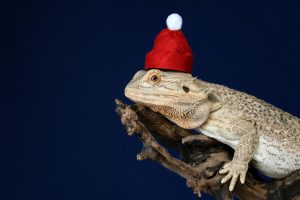As with chuckawallas, desert iguanas aren’t often available within the pet trade. Only Nevada allows the commercial exportation of this lizard. Several states allow a couple of individuals to be collected with a hunting licence . Not many herpetoculturists work with this beautiful species of lizard but hopefully more will do so to make sure that captive-born animals are available.
Taxonomy and explanation
The Dipsosaurus dorsalis (Dipsosaurus dorsalis) is that the only member of the Dipsosaurus , and may be a very attractive whitish colored lizard that’s 4-5.25 inches (10-13 cm) snout to vent length. The tail is nearly twice the length of the body and is ringed with keeled scales. Males usually have more angular and broader heads and bigger femoral pores than females. Both sexes may develop pink areas on the edges of the belly during the breeding season.
They are most frequently found on sandy plains but also occur along rocky stream beds, lower slopes of hills, and silty floodplains. within the northern a part of their range, they’re found in association with creosote bushes, whereas within the southern portion of their range they’re found in sub-tropical shrub areas. They seek shelter in rodent burrows where they’re going to often plug the burrow in the dark , possibly to secure it from predators.
Desert iguanas are diurnal and sometimes not found abroad early within the morning. Their body temperatures are recorded at 108°F (42°C), which is that the highest known active temperature for reptiles. they’re active when most other lizards have retreated from the warmth .
Care in Captivity
Desert iguanas should be kept during a desert environment with some quite burrow constructed of plastic or pipe . These lizards love it hot, so an end of the cage should have a hot basking area with temperatures in more than 120°F (49°C) and therefore the other end should get no hotter than 95°F (35°C) during the day.
Ultraviolet light should be provided by exposure to the sun or through full spectrum bulbs. Research shows that Dipsosaurus dorsalis behavior is influenced by ultraviolet (Alberts 1993). Their femoral pore secretions are illuminated by UVA that then allows other members of the species to locate them. These secretions are messages between lizards that probably indicate territories and advertise the presence of a male in breeding condition.
Desert iguanas are omnivores and consume the buds, flowers, and leaves of desert plants including the coville . within the northern a part of its range, the spring diet could also be composed predominately of creosote flowers which they’re going to climb into the shrub to seek out . Insects, other arthropods, and its own fecal pellets form significant parts of the summer diet. In captivity, they will be fed the salad and insects like crickets or super worms several times per week.
Reproduction
Desert iguanas should be hibernated for 3 to 4 months to stimulate reproduction. within the wild, desert iguanas can often be found in pairs from April through mid-July and breeding occurs in April and early May. Females usually retreat underground in June to get three to eight eggs that hatch in August.
Moist sand and dirt should be placed at the top of the cage faraway from the basking light therefore the female can construct a burrow and deposit her eggs. The eggs should be incubated in slightly moist vermiculite. Hatchlings should be fed an equivalent diet as adults with special attention given to appropriate calcium supplementation during the primary year. Hatchlings that weren’t hibernated reached sexual maturity in 1 year (personal communication, 1998, Tom Greb).
















